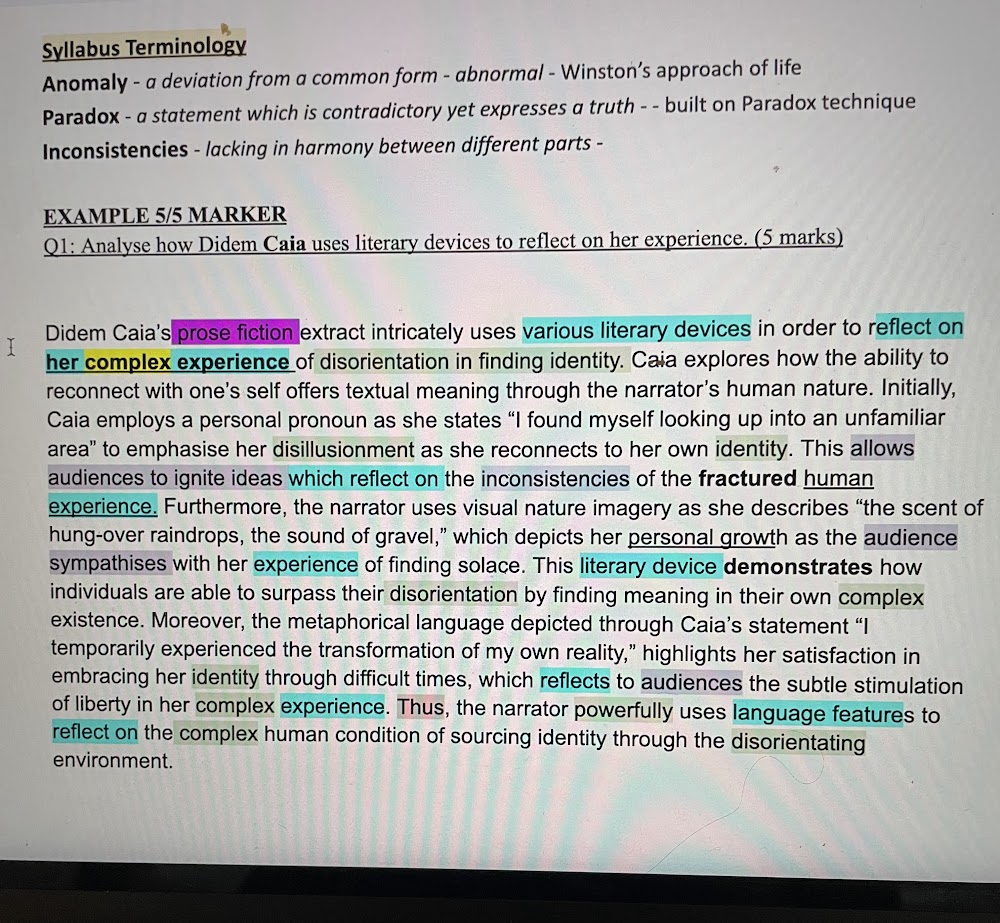
Unseen texts can feel intimidating for Year 12 students, (Human Experiences: Section 1) however they’re one of the most powerful ways to showcase independent thinking and authentic analysis. In the Common Module: Texts and Human Experiences, unseen tasks assess how well students can apply their understanding of language, representation, and the rubric to a completely new text. As a tutor, teaching this skill is about balance—building confidence in technique while training students to think critically under time pressure.
The first step is demystifying the rubric. Students must be fluent in its language: “human qualities and emotions,” “anomalies, paradoxes and inconsistencies,” and “individual and collective experiences.” Using these terms naturally in their responses helps them sound evaluative and conceptually aware. Encourage them to link every observation about the text—whether a metaphor or tone shift—back to these ideas. For example, if a poem uses fragmented syntax, guide them to explain how this represents the fractured nature of memory or trauma.
Teaching unseen responses also means prioritising technique over plot. Train students to annotate quickly for language devices: imagery, juxtaposition, tone, structure, symbolism, and perspective. I often use the acronym SITTS (Structure, Imagery, Tone, Technique, Symbolism) to help them organise their first read. Then, they can link each technique to a human experience, such as resilience, isolation, or belonging, to form a coherent thesis.
Timing is equally critical. In an exam, students should allocate roughly five minutes to reading and annotating, ten to planning, and twenty to writing. Practice drills with short extracts build fluency in these stages. I also model paragraph structures using PEEL—Point, Evidence, Explanation, Link—to keep ideas focused and analytical.
Eleni Nicholas

